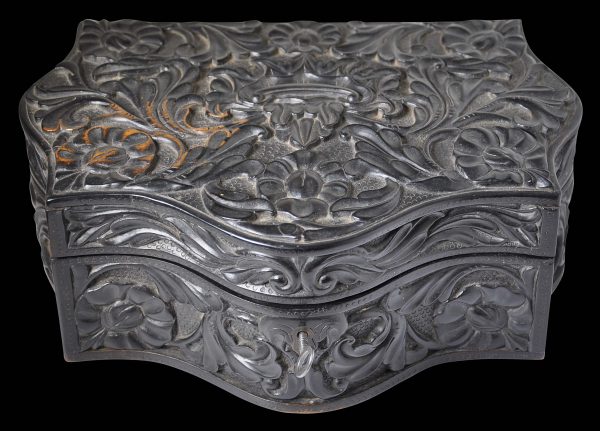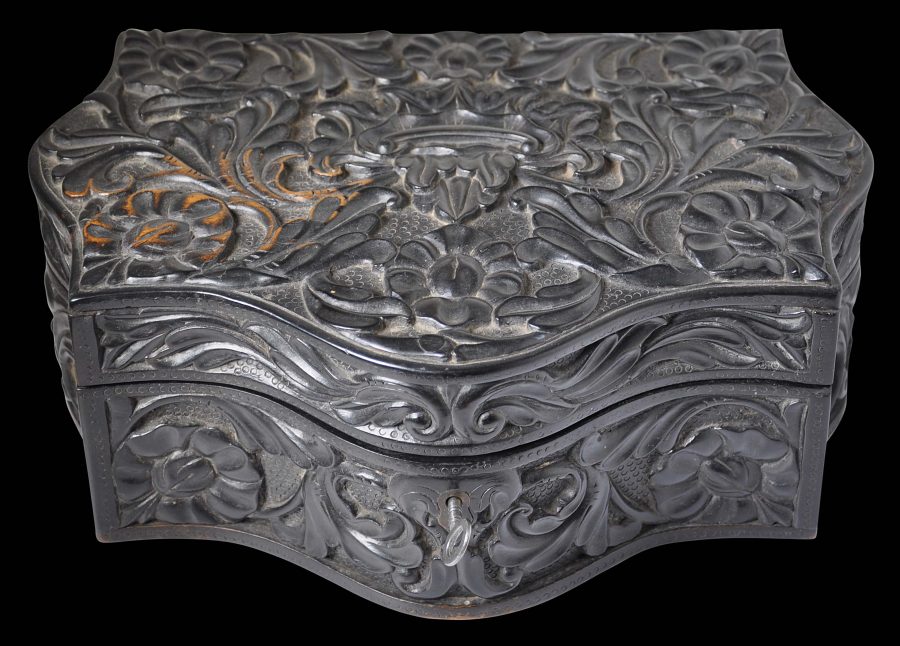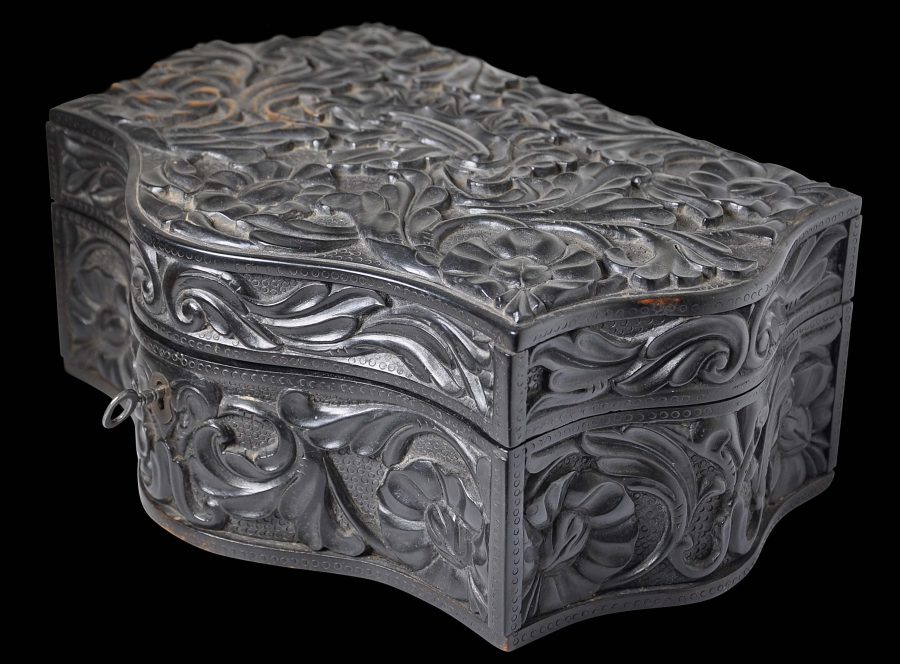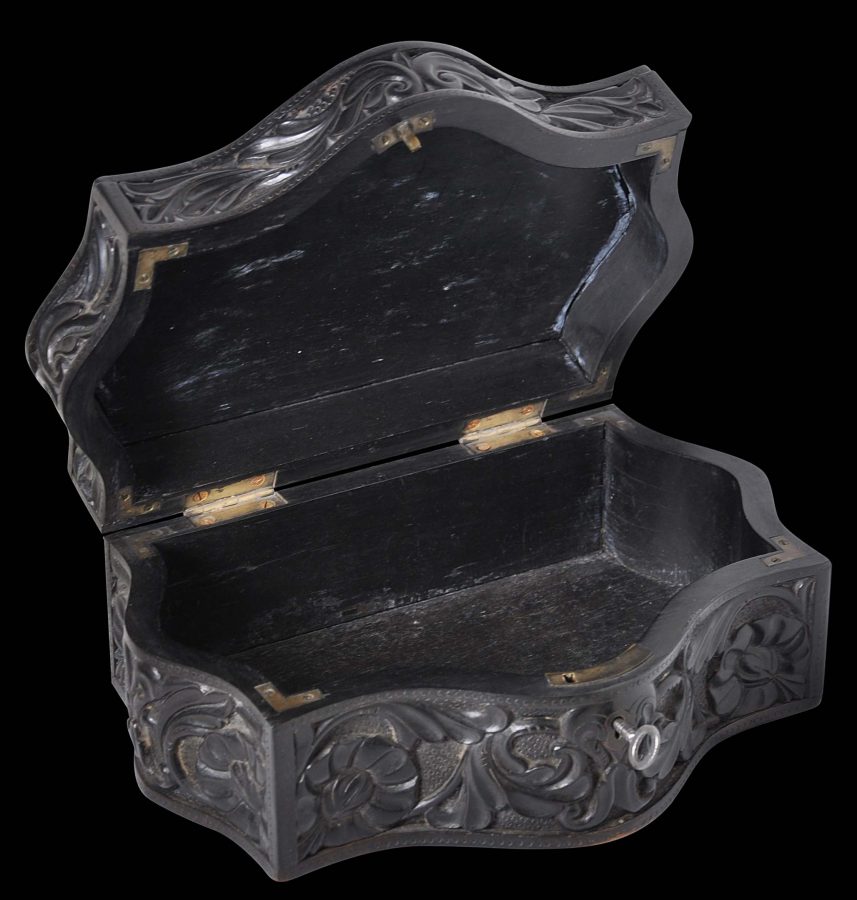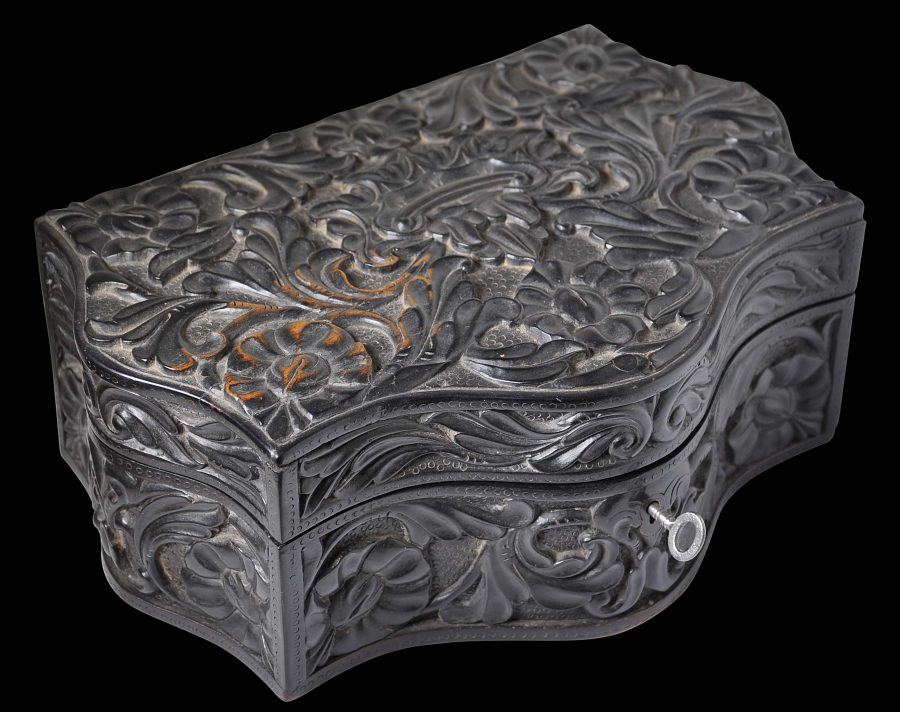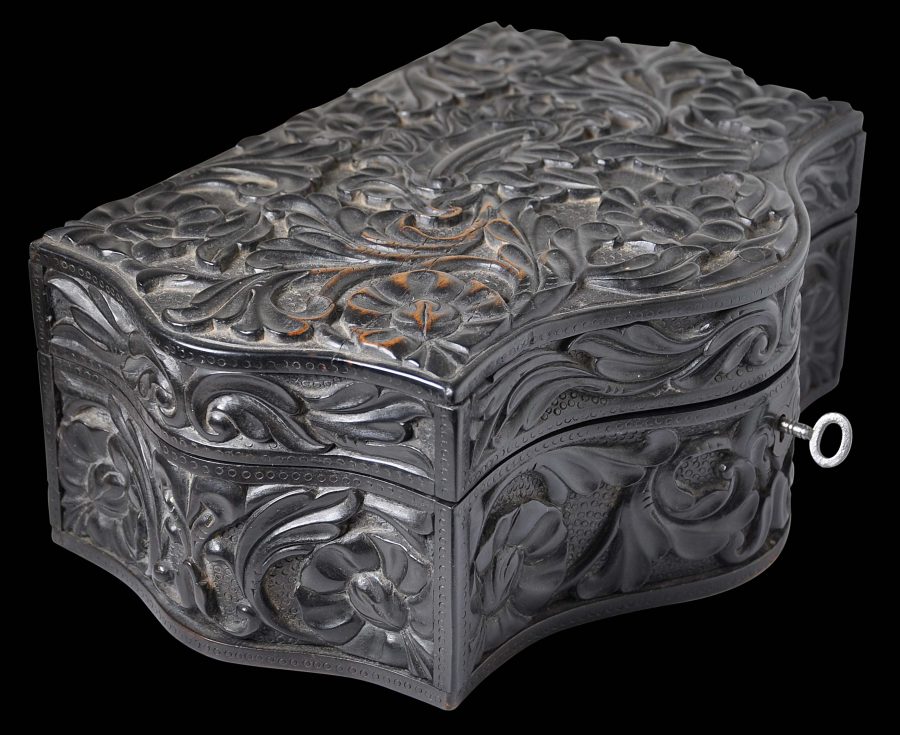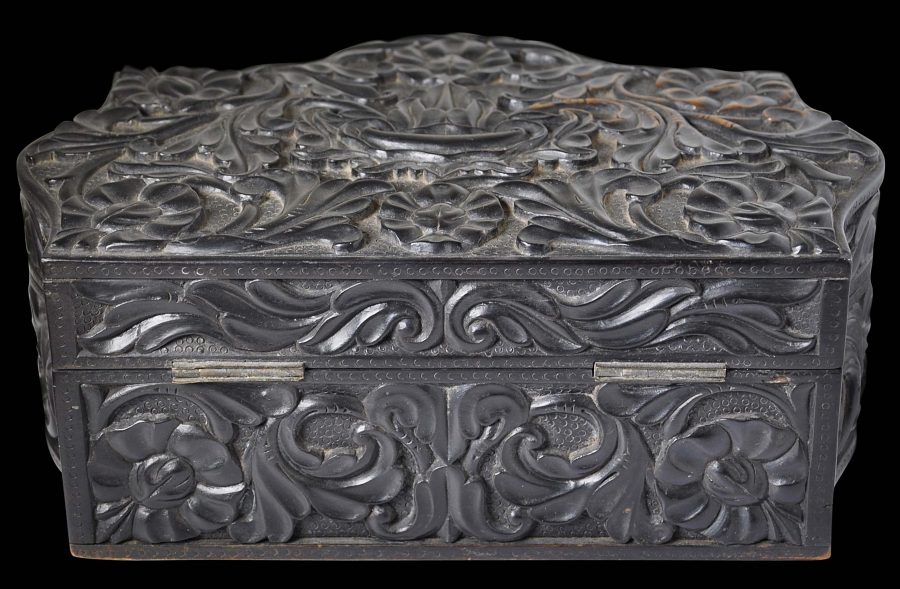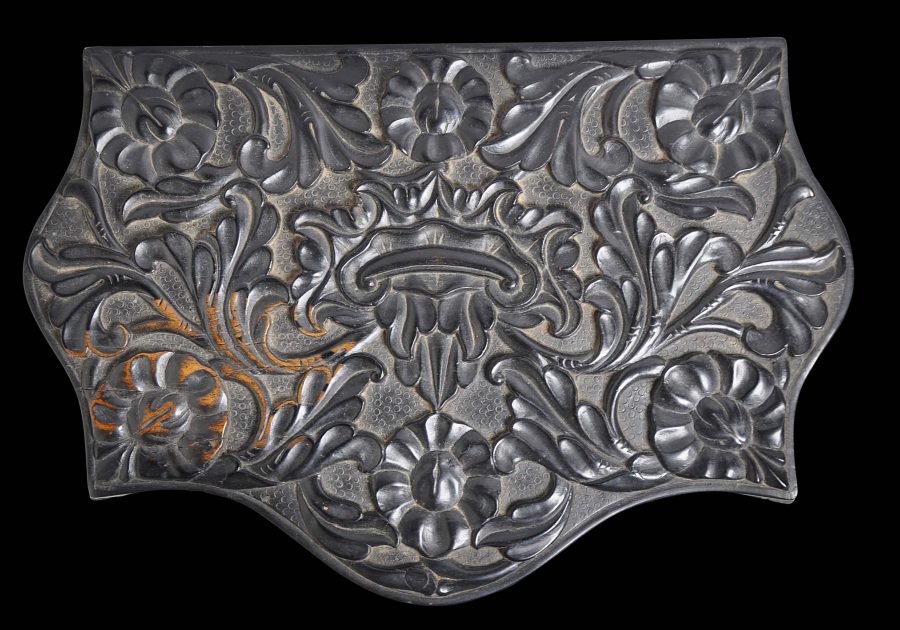Enquiry about object: 3173
Sri Lankan Carved Ebony Box
Galle, Sri Lanka circa 1800
height: 10.3cm, length: 27.3cm, depth: 19cm
Provenance
UK art market
This fine box of ebony (Diospyros Celebica) with rounded corners is carved extravagantly on all sides and on the hinged lid with bold flower and leaf designs. It is a superb example of colonial carved ebony woodwork of a type associated with the southern Sri Lankan port town of Galle. It has an excellent patina, and some natural variation in the grain to the lid with some lighter streaking. The base is of ebonised wood.
Boxes such as this example were used in Sri Lanka by ladies to store jewellery and hair ornaments. Later, they were commissioned for the colonial market as well. They tended to be made by Tamil woodcarvers who were members of the Karava caste (Veenendaal, 2014, p. 32).
Carved ebony furniture has been recorded in English collections from as early as the mid-eighteenth century. As Jaffer (2001) points out, this type of furniture was thought to be Elizabethan but is now recognised as being either of Indo-Portuguese, Batavian, Sri Lankan or Coromandel Coast origin.
Distinguishing between items of carved ebony furniture made in Sri Lanka, Batavia or the Coromandel Coast is difficult because Dutch administrators and merchants are likely to have taken as personal effects furniture produced in the Coromandel Coast region to other Dutch settlements in Sri Lanka and Batavia where it was extensively copied. Similar quality craftsmanship, partly available from indentured Tamil craftsmen taken by the VOC to all three destinations, was available in all three places as was ebony wood (Jaffer, 2001). However, this box does have flower motifs that are definitely of Sri Lankan origin. A box of similar proportions and with deep carving is on display in the National Museum of Sri Lanka in Colombo.
The condition of this box is excellent. The hinged lid fits evenly and there are no signs of warping or losses to the carving. The box retains its lock and key, although the lock no longer seems to function.
References
Coomaraswamy, A.K., Mediaeval Sinhalese Art, Pantheon Books, 1956.
Jaffer, A., Furniture from British India and Ceylon: A Catalogue of the Collections in the Victoria and Albert Museum and the Peabody Essex Museum, Timeless Books, 2001.
Tchakaloff, T.N. et al, La Route des Indes – Les Indes et L’Europe: Echanges Artistiques et Heritage Commun 1650-1850, Somagy Editions d’Art, 1998.
Veenendaal, J., Furniture from Indonesia, Sri Lanka and India During the Dutch Period, Foundation Volkenkundig Museum Nusantara, 1985.
Veenendaal, J., Asian Art and the Dutch Taste, Waanders Uitgevers Zwolle, 2014.


